Testing Wholesale Acid Wash Bucket Hats from Beechfield Brands
Just in Time for Summer: Wholesale Acid Wash Bucket Hats from Beechfield Brands
The Beechfield BC688 Vintage Bucket Hat is the newest addition to Beechfield Brands headwear collection. Debuted at Printwear & Promotion LIVE in February 2025, this new release offers a blend of retro aesthetics and modern practicality. Crafted from 100% heavy-washed cotton, this unisex hat features a vintage-inspired design with a slanted brim adorned with decorative stitching and stitched ventilation eyelets for enhanced breathability. Its TearAway label makes it simple to rebrand and it's available in 4 very versatile shades: black, olive, stone, and denim.
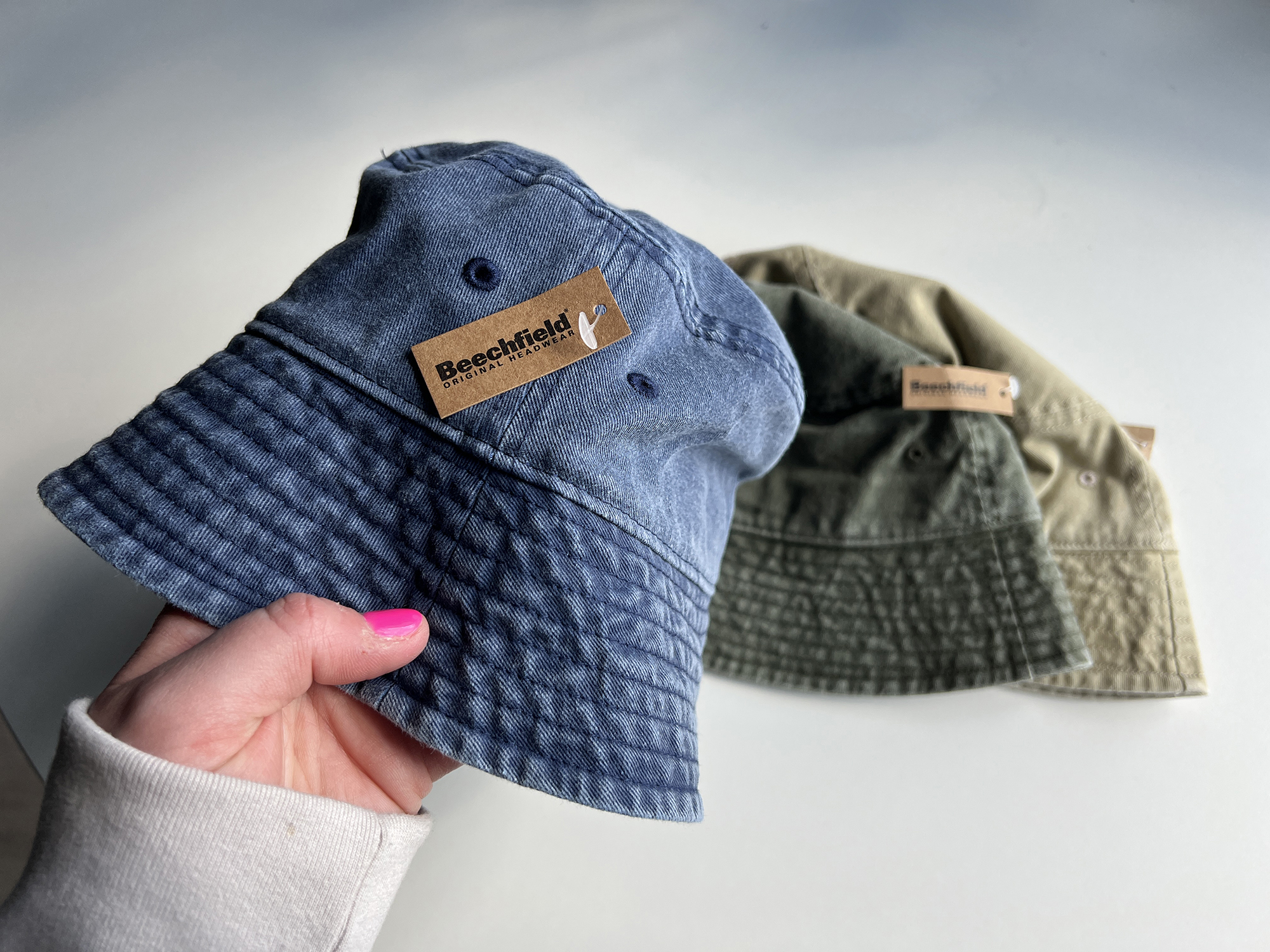

Why might the Stahls' UK Content Marketing Specialist be writing a blog specifically about this particular product? I hear you ask...
Because I bloomin' love it.
These bucket hats are right up my street, but more importantly, they’re a dream for decorating.
Fully rebrandable and designed with versatility in mind, the Beechfield BC688 Vintage Bucket Hat is perfect for a wide range of applications, from heat transfers to chunky raised badges. What really sets them apart, though, is how easy they are to customize.
Always on the lookout for an excuse to create a well-performing Instagram reel, I was intrigued enough to put them through their paces. The design looked promising, the price tag was appealing and knowing Beechfield’s stellar reputation for quality, I wanted get my hands on them and see how they reacted to heat.
Over the years working with Stahls’, I’ve printed on a variety of bucket hats, and I’ve encountered my fair share of challenges: awkward seams, uneven surfaces, tricky angles, and materials that just didn’t play nice under heat. So, before diving in, I made a list of the most common issues I’ve faced in the past, and used that as a benchmark to test just how decorator-friendly the BC688 really is.
Issues to overcome:
- Thick seams interfering with the pressure
- Inability to print smaller sizes (again due to seams affecting pressure) making real-world fulfilment a problem.
- Scorching on darker colours
- Thick texture showing through the decoration method
- Lack of retail/trendy looking budget-friendly options.
The test set up:
Using the Hotronix 360IQ Hat Press, I decided to test a lighter and a darker shade bucket hat with DTF heat transfers and a Stahls' HTV as my chosen decoration methods. I'll get into why below...
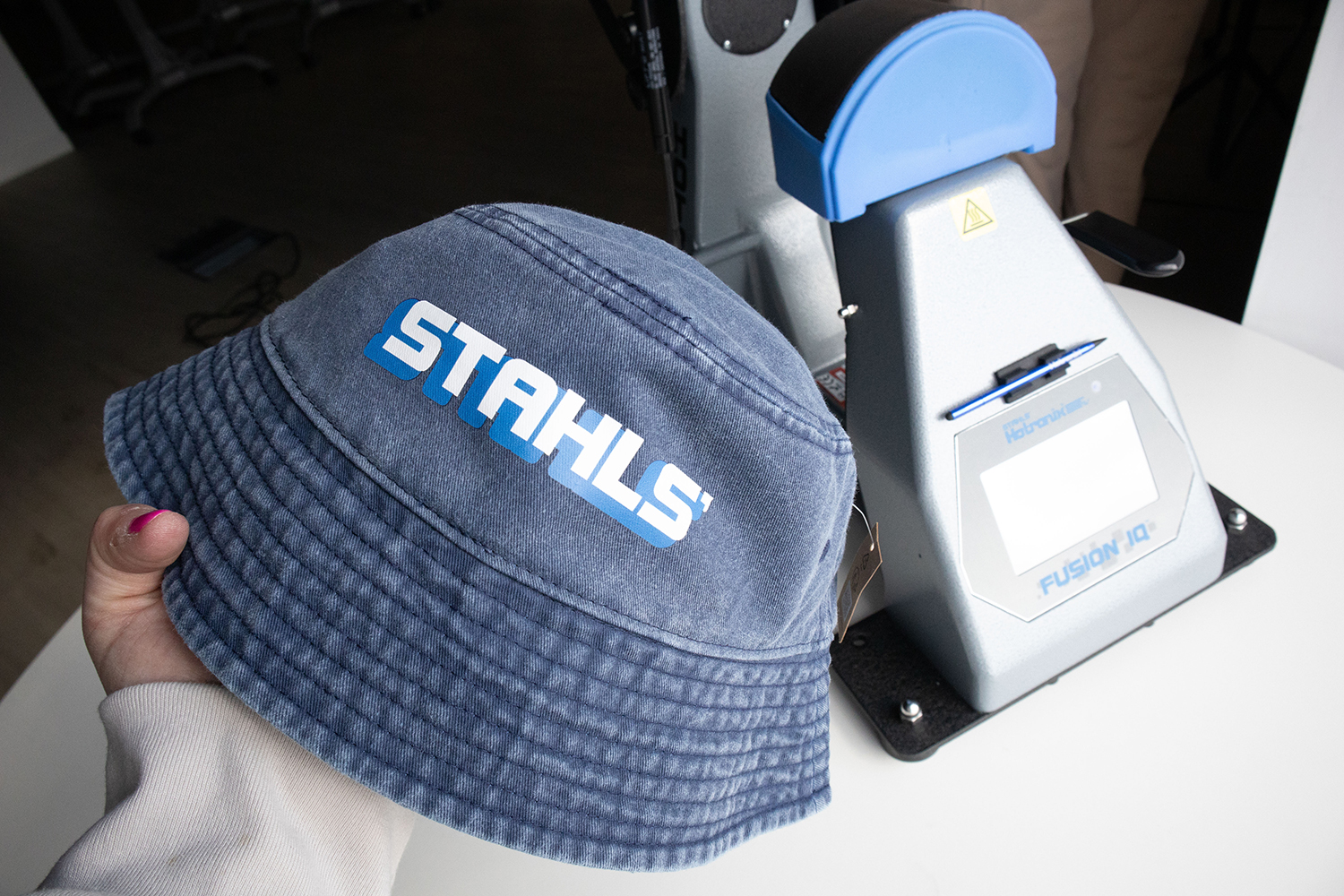

Set up 1: Denim & DTF
Stahls' UltraColour MAX DTF heat transfers are renowned for their exceptional quality, backed by a 75+ wash guarantee and a low minimum order requirement. They're an ideal solution for sample production, personalised items, and short runs. However, unlike their counterparts, UltraColour and UltraColour PRO, this particular transfer option does not include a subli-blocking layer.
This makes UltraColour MAX less suitable for use on most heavily dyed garments. The main reasons being:
- Dye-Migration – Without a specially engineered barrier, bold or dark garment dyes can migrate through and alter the appearance of light-colored transfers.
- Too Flexible – These transfers are designed to be soft, thin, and highly flexible. While that’s great for comfort and stretch, it also means lighter colors are more susceptible to showing the garment's texture and any dye bleed-through.
While many of these challenges are only occasional when printing on garments, they become more persistent when it comes to headwear. Hats are often constructed from deeply dyed polyester materials, which are notoriously prone to dye migration, often disrupting even the most carefully executed decoration methods.
Now, as a member of the Stahls’ UK team, I could’ve easily opted for a transfer with a subli-blocking layer or simply selected a garment colour less likely to cause issues. But where’s the fun (or the learning opportunity) in that?
As mentioned earlier, these bucket hats are made from 100% heavy washed cotton. While cotton doesn’t tend to suffer from dye migration in the same way polyesters do, my first test was focused on whether the base colour of the hat would show through a white transfer, and the result was pleasantly surprising.
As seen in the image above, the white transfer stands out crisply against the blue denim bucket hat, with only a subtle hint of fabric texture visible through the thinner finish of Stahls’ DTF heat transfers. What impressed me even more was that, despite applying at 145°C, there was no visible heat marks, a common concern with headwear due to uneven surfaces and fabric sensitivity.
All bucket hats come with the challenge of raised, thick seams that can interfere with printing. The only real way to decorate a bucket hat effectively is to use a cap press. This is due to how the hat’s band fits onto the curved platen of the press. However, even though I ordered the largest size of the BC688 denim hat (L/XL), I found myself dealing with at least one seam that ended up on the platen during pressing.
As a heat printing professional trained by the world’s leading heat press manufacturer, I know this is a big no-no. When a bulky seam like that rests directly on the platen, it can cause uneven pressure during the application process. This often leads to problems like peeling or incomplete edges—a decorator’s nightmare.
I was a bit concerned, wondering if I’d face similar issues with the S/M beige hat, given that the smaller size might bring both seams into play during pressing. But to my surprise, the 360IQ Hat Press with its moulded platen took care of everything. Even with a seam present on the platen, it evenly applied the flexible DTF heat transfer without any trouble. The result was flawless, proving just how effective the press is in handling tricky applications like this and how easy this hat is to decorate.
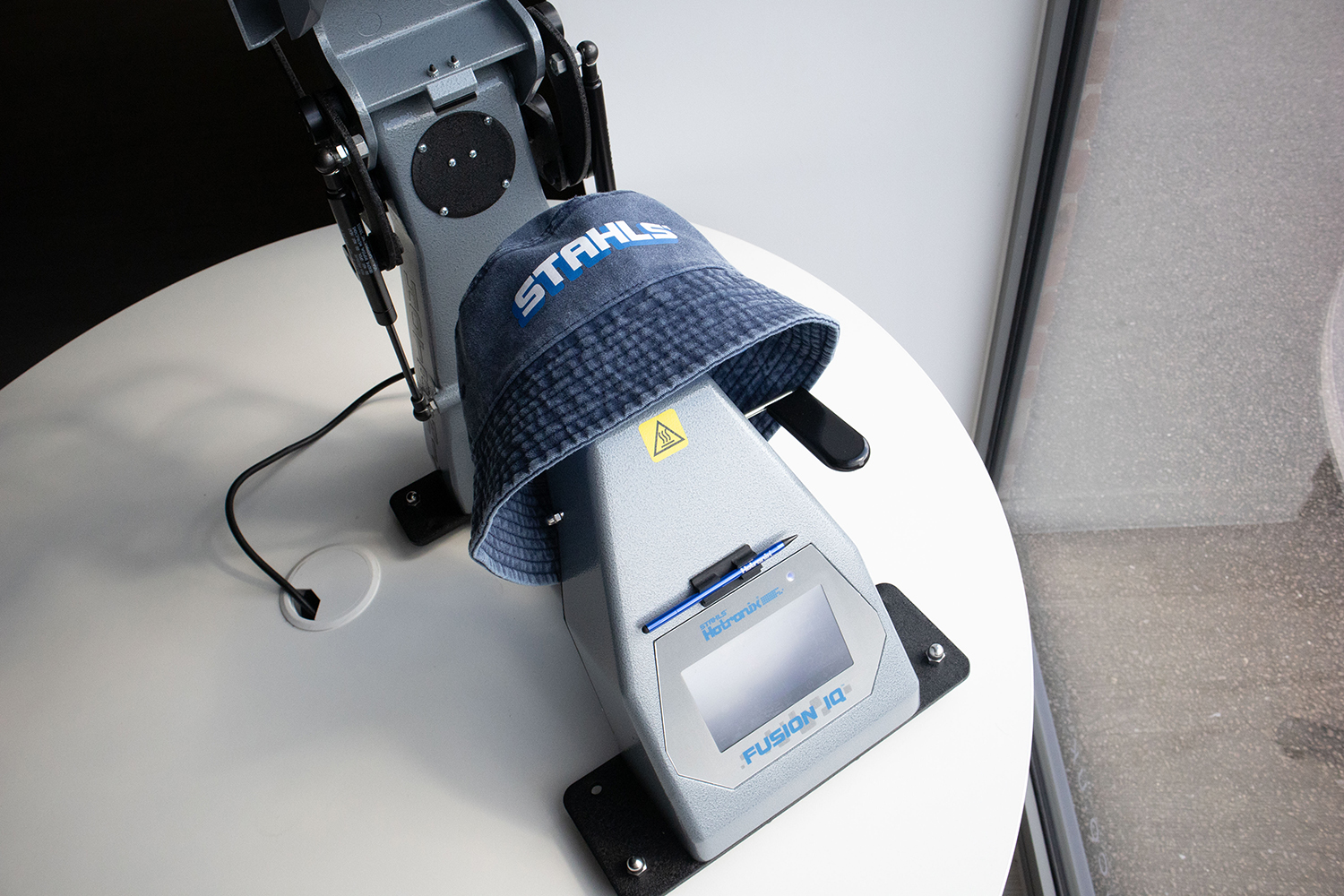

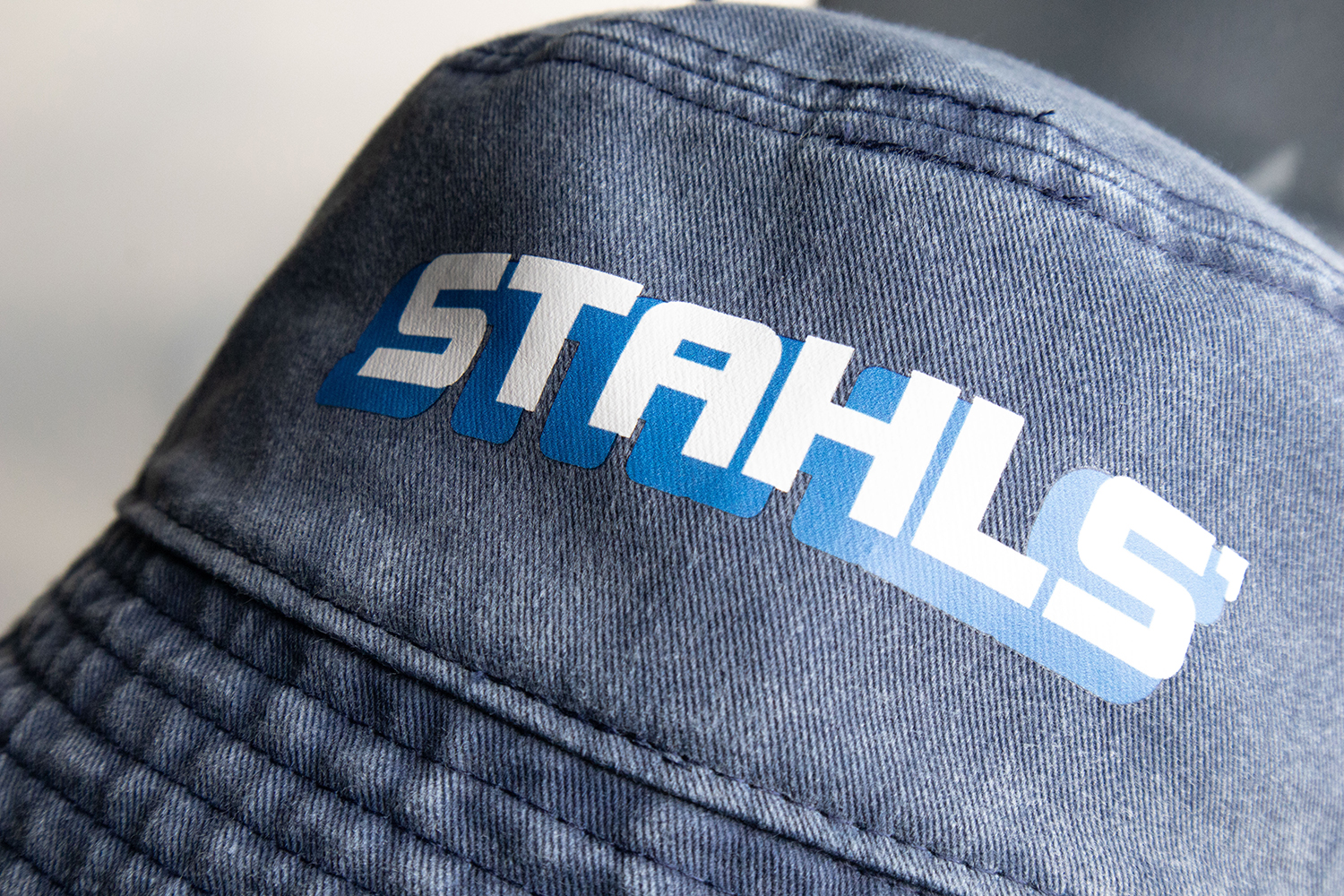

Set up 2: Stone & HTV
For test number 2, I used the lighter of the 4 shades of bucket hat, Vintage Stone and printed it with a newer Stahls' HTV release.
Why HTV, you ask? Well, HTV (Heat Transfer Vinyl) has a significantly higher application temperature compared to UltraColour MAX DTF, and I wanted to see how it would hold up under a higher heat setting, essentially putting it to the scorch test.
What is scorching?
Scorching a garment occurs when it’s subjected to a heat application that exceeds the fabric’s tolerance. Essentially, you're applying heat at a temperature that the material cannot withstand, causing irreversible damage. While some fabrics are more resilient to high temperatures, polyester blends, in particular, are especially prone to scorching when exposed to temperatures over 130°C.
When polyester blends (or other sensitive materials) reach this critical temperature, they begin to release gases as a result of the heat breaking down the fibers. This chemical reaction permanently alters the fabric’s appearance. The most common signs of scorching include a shiny, glossy finish where the fabric has been exposed to excessive heat, or even dark, burn-like marks that can appear around the edges of your print. These unsightly blemishes affect the garment's aesthetic and look extremely unprofessional.
For this experiment, I used Stahls' CAD-CUT Glimmer HTV. To push the limits, I set the press 10°C higher than the recommended 150°C application temperature for Glimmer, mimicking the conditions used for other HTV brands and even the temperatures typically used for applying screen-printed heat transfers.
In my first Denim/DTF test, I carefully placed a design with about 3-4 cm of space between the edges of the transfer and the thicker raised seam of the bucket hat. This was intentional, as I know from experience that designs placed too close to a raised seam can fail to adhere properly. However, after realising that both seams would likely land on the platen when using the smaller S/M size of the hat, I decided to push the limits a bit further.
I opted for a wider design this time, which filled more of the hat’s band, bringing the print right up to the raised seams.
To my surprise, not only were there no heat marks at 160°C, but the risky design placement worked out beautifully. The wraparound leopard print HTV adhered perfectly, even over the seams and ventilation eyelets. There were no peeling edges, no air pockets, just flawless, eye-catching decoration.
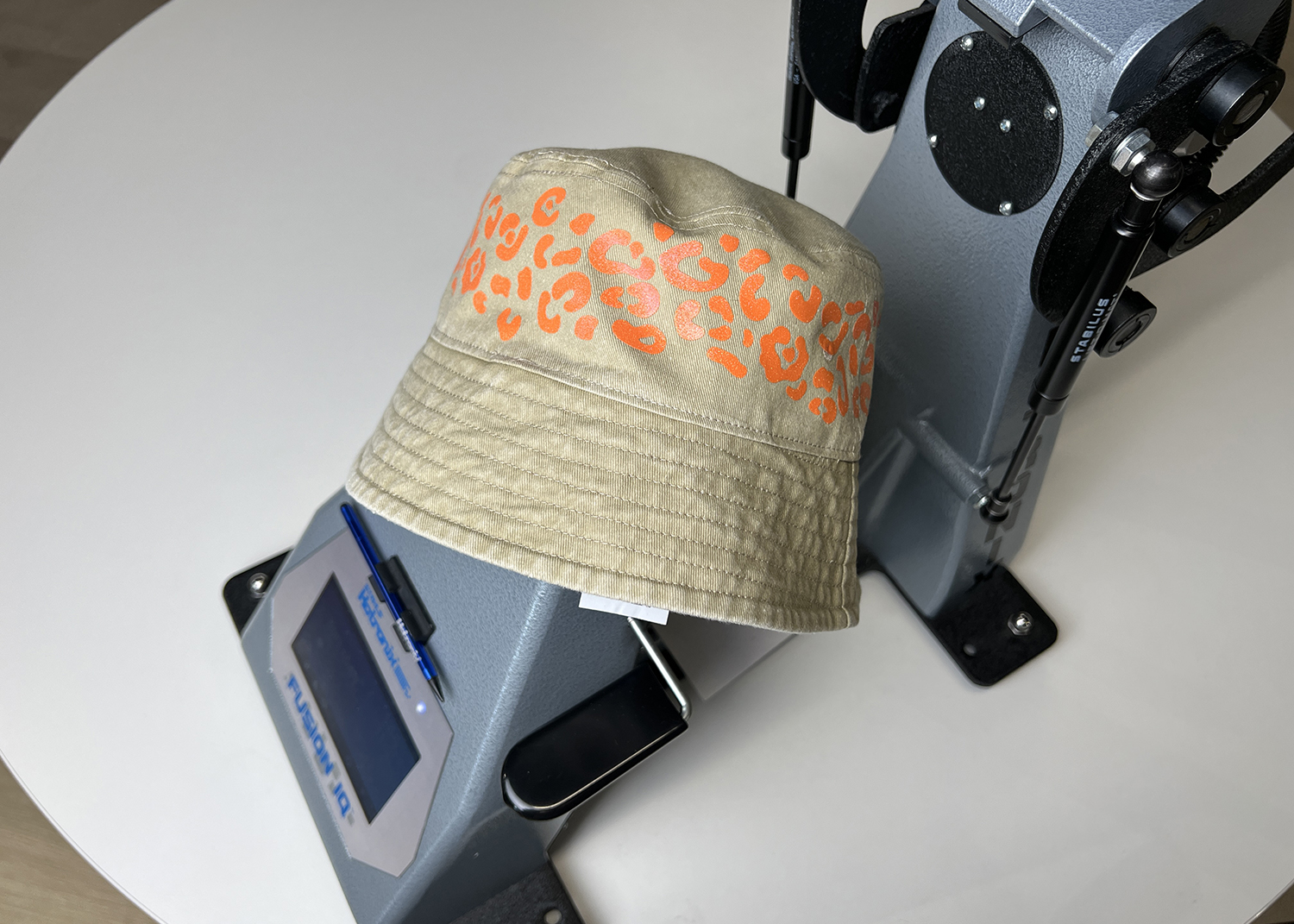

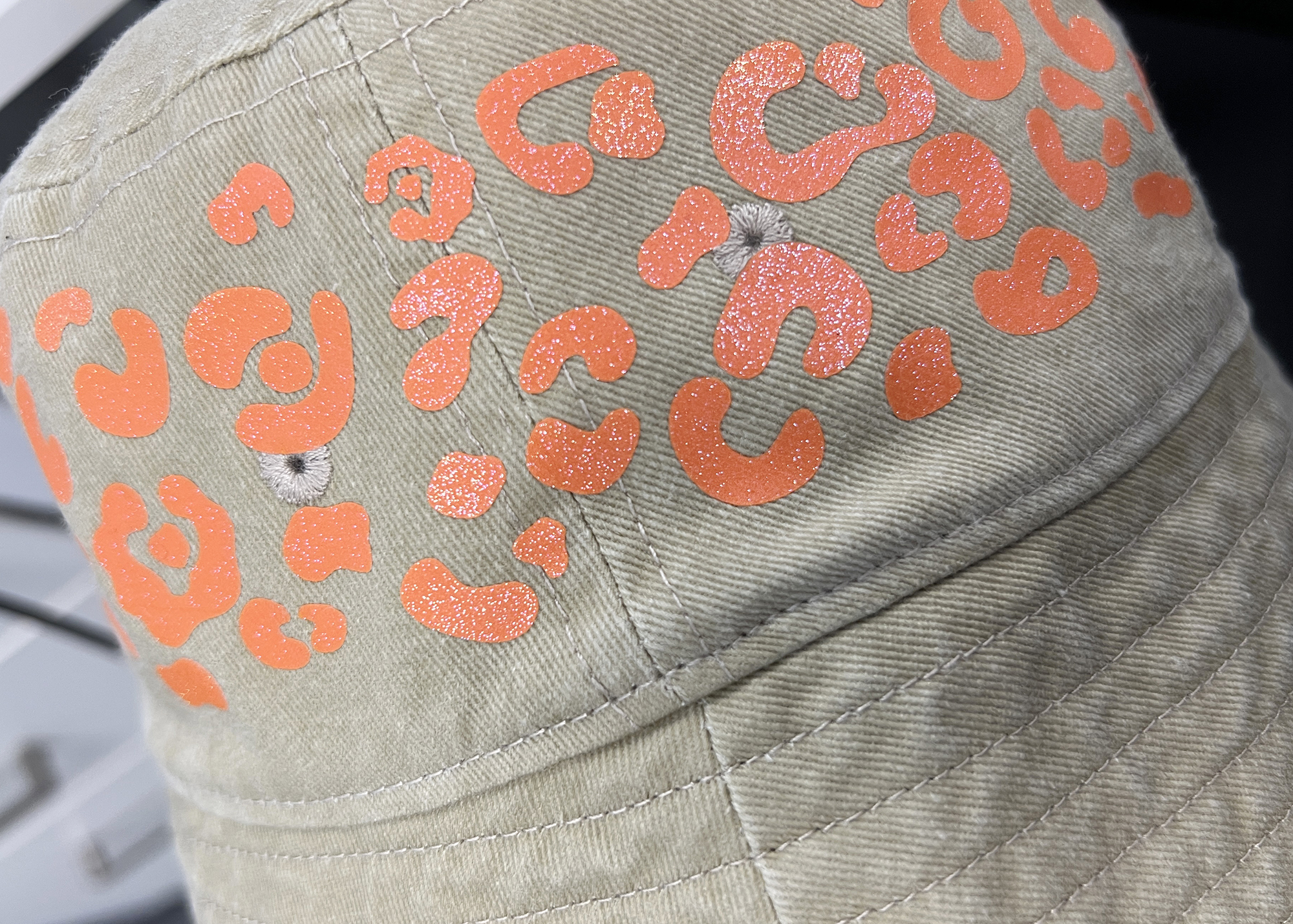

The Conclusion:
The Beechfield BC688 Vintage Bucket Hats are not only highly on-trend but also perfectly suited for the retail market. Their modern yet timeless design makes them an ideal addition to any product range, whether you're in fashion, promotional products, or custom merchandise. The combination of premium cotton and vintage wash gives these hats a standout aesthetic that appeals to a wide range of customers, from streetwear enthusiasts to festival-goers.
What truly sets these hats apart is how easy they are to decorate. Whether you're using heat transfer vinyl, screen printing, or direct-to-film transfers, the BC688 provides a versatile canvas for a variety of decoration techniques. Their lightweight and flexible nature ensures that the print adheres flawlessly, with minimal risk of scorching or distortion.
Given their stylish design, market appeal, and decorator-friendly features, there’s absolutely no reason why you shouldn’t be adding these hats to your product lineup. They offer endless customization potential, allowing you to cater to a broad audience while offering something that is both practical and fashionable.
If you’re looking to expand your headwear range or add a popular accessory that is simple to decorate and bound to sell, the BC688 is a must-have.
The Recommendation:
For flawless headwear printing, the Hotronix 360IQ Hat Press is a must-have. Its 360-degrees of decoration and moulded platen ensure even pressure across the entire hat, tackling those tricky seams and curves with ease. With precise temperature control and customizable settings, it guarantees consistent, high-quality results, making it the perfect tool for any headwear decorating project. If you want to streamline your process and deliver professional-grade prints, the 360IQ is the key to success and business growth.

